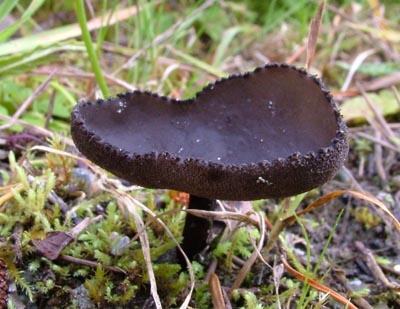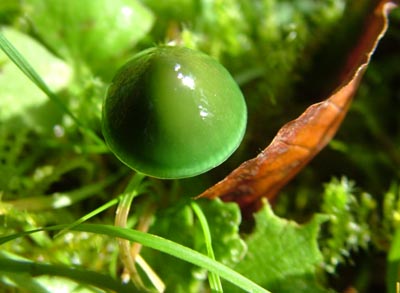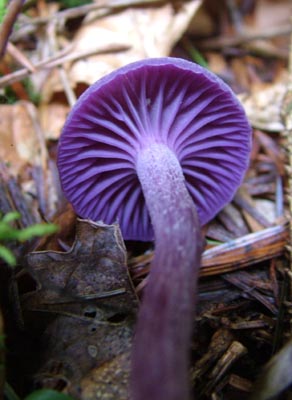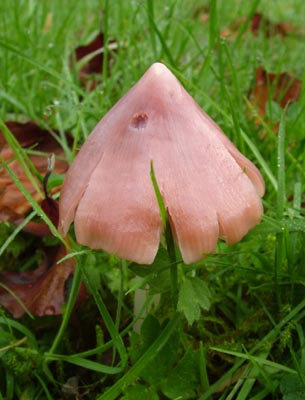The interminable cold weather has given me the opportunity to reflect and consider my blog posts over the past 10 years. When I started in
January 2003, I had no idea that I was on a voyage of discovery that would lead to new species being discovered for Ireland, discoveries new to science, to television and radio appearances, writing opportunities, participation in Ireland's Bioblitz, requests to use images and a grant from the Heritage Council, but most importantly of all: to an excellent network of contacts, friends and experts. In the frequent dull and wet days, this network has been the impetus to keep on researching and hope for the brighter days ahead. Thank you all for that.
Another matter that frequently occurs to me is the contemporary nature of my blogs: I show what I can photograph at any particular moment in time. This has the advantage that it shows what can be found on any particular day, but has the disadvantage that continuity is lost: I might show the larva of a species in May, but the adult in September, so although I am aware of the continuity, my blog doesn't show it. I have therefore decided to occasionally add extra blog posts that include older images (as well as any relevant new ones) in order to provide an overview or summary that would otherwise have been missed.
My
previous post showed the bright turquoise fungus
Chlorociboria aeruginascens and I instantly remembered all the colours that can be found in fungi. This post uses a few of my older images to celebrate that fungal rainbow.
Firstly, a pair in black and white:
Helvella corium is a rarely-found ascomycete that is usually encountered on sandy soil. I found it at the edge of a track in coniferous forestry in 2004. This was the first time it had been found in Ireland. As the first finder, I was allowed to give it its official Irish name: I chose An Cupán Dubh - the Black Cup.
 |
| Helvella corium |
I found it in more or less the same location for perhaps 3 years, but not since then: it must have some very strict habitat requirements.
The Porcelain Fungus is probably my favourite mushroom. It is very well named: the flesh is translucently pearlescent and the overall construction is very fine indeed:
 |
| Porcelain Mushroom - Oudemansiella mucida |
It is only found on dead Beech and always on the higher parts of dead branches.
And now the rainbow:
Amanita muscaria - the Fly Agaric - is the archetypal fairy toadstool. It is found in association with Birch, and has strong hallucinogenic properties:
 |
| Amanita muscaria - Fly Agaric |
The common name comes from its old use for killing flies by crumbling some of the flesh into a saucer of milk.
Waxcaps are a family of mushrooms with very strong colours. Hygrocybe reidii is my latest discovery, with a very strong smell of honey :
 |
| Hygrocybe reidii - Honey Waxcap |
Russula ochroleuca is a very common fungus. I find it in all woodland environments, and often in large numbers:
 |
| Russula ochroleuca |
Amanita citrina is another mushroom that I rarely encounter in its pure form:
 |
| Amanita citrina - False Death Cap |
There is a pure white variant which smells of raw potato and I find that much more frequently.
Hygrocybe psittacina - the Parrot Waxcap - starts off life with a very bright green cap, but this colour fades over a couple of days as the pigment is spread over a larger area as the mushroom grows and matures:
 |
| Hygrocybe psittacina |
Entoloma serrulatum is the bluest mushroom I have found:
 |
| Entoloma serrulatum |
The cap is a paler blue, but the gill edges are an intense blue that has to be seen to be believed. Entolomas are a huge group that can be very difficult to identify to species: the monograph (with addenda!) runs to some 1200+ pages.
Wood Blewit - Lepista nuda - is one of the edible fungi. Care must be taken, however, to avoid confusion with purple Cortinarius species which are poisonous.
 |
| Lepista nuda - Wood Blewit |
Smell is a good indicator, with the Blewit having a pleasant, perfumed odour; but spores are the best check: Blewit spores are pink, whereas the Cortinarius spores are always brown.
The Amethyst Deceiver is also edible (although I find it tedious to taste):
 |
| Amethyst Deceiver - Laccaria amethystina |
Young, fresh specimens are bright purple, but older ones go white or brown, which can lead to confusion.
And, finally, a couple that don't fit into the rainbow:
The Pink Waxcap - Hygrocybe calyptriformis:
 |
| Hygrocybe calyptriformis |
And Clavaria fumosa, looking very much like a worm colony:
 |
| Clavaria fumosa |
The last two can be found on old lawns which have not been treated with fertiliser or 'improved' in other ways.
Did anyone notice what I did with the rainbow?










2 comments:
<> Yup. Interesting post - reminds one how colourful fungi can be. (Any colour would be welcome right now, the countryside is still in midwinter faded/bleached mode.)
That pink worm-like Clavaria looks faintly obscene :-)
Oops. the quote didn't come through!
"Did anyone notice what I did with the rainbow?"
Post a Comment